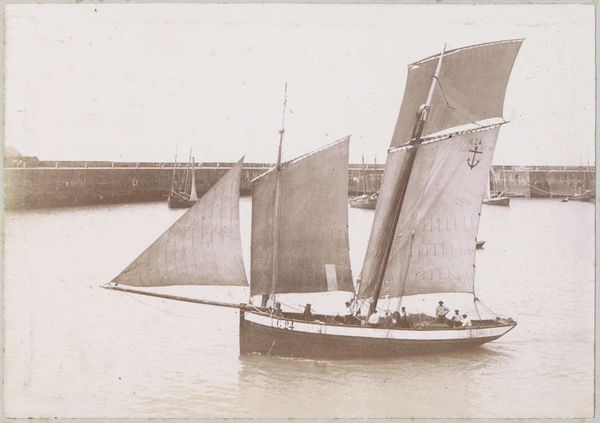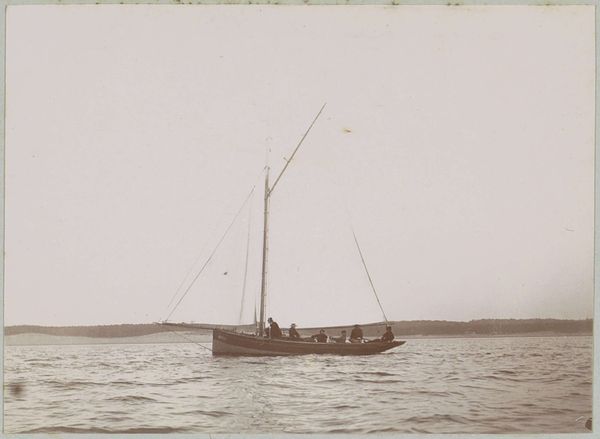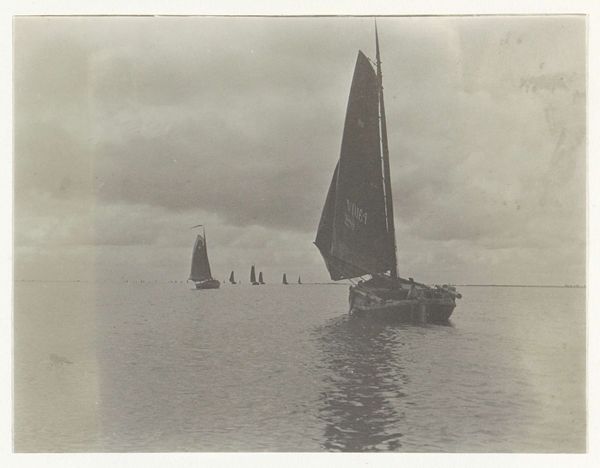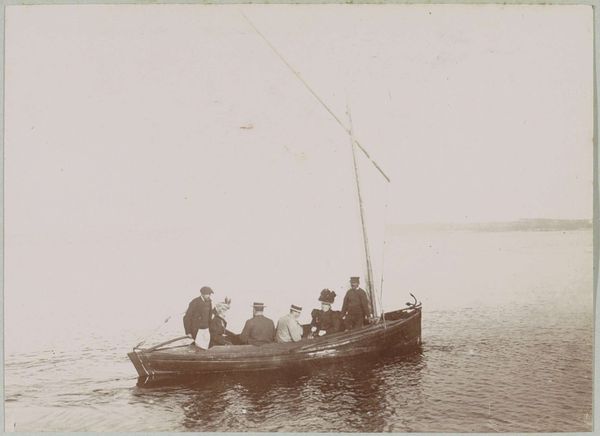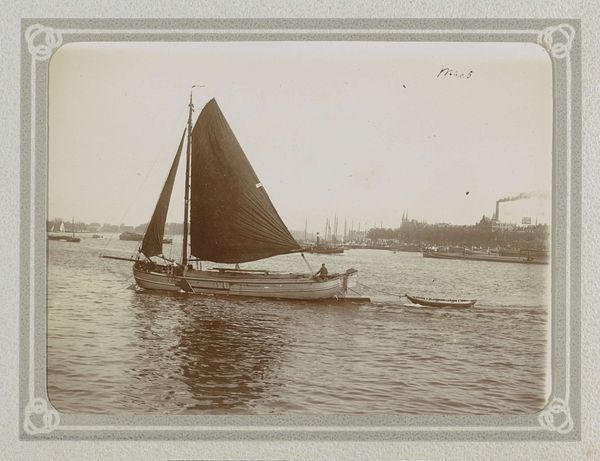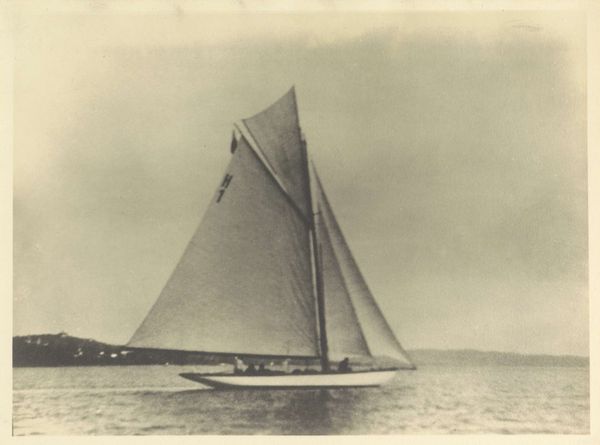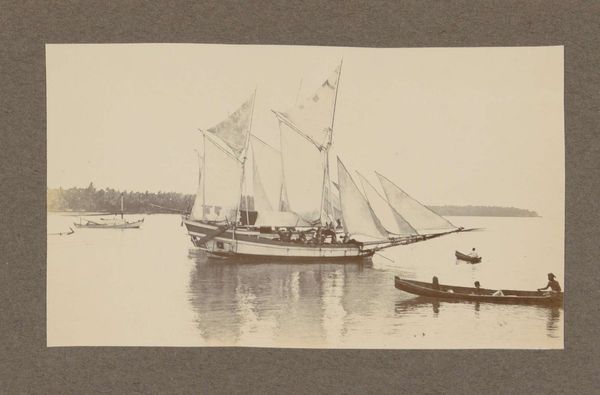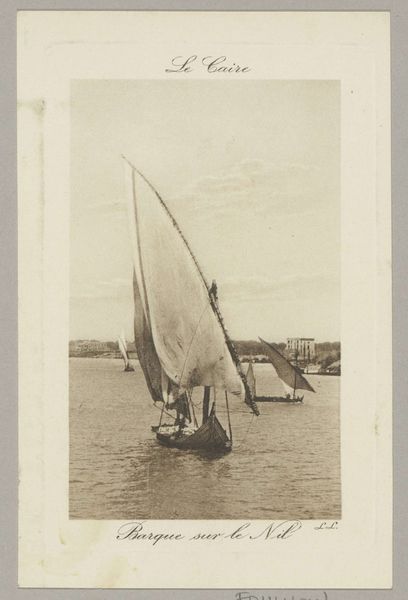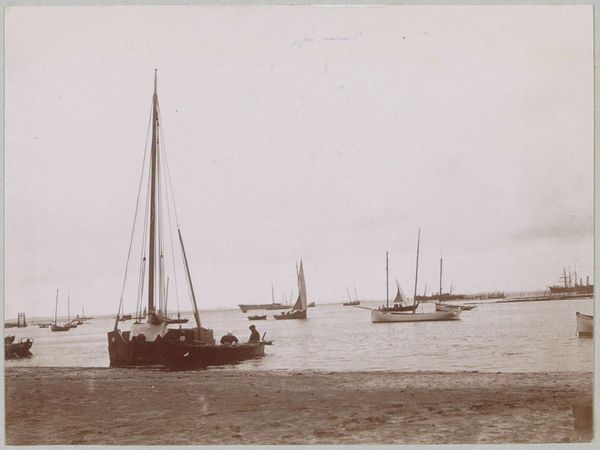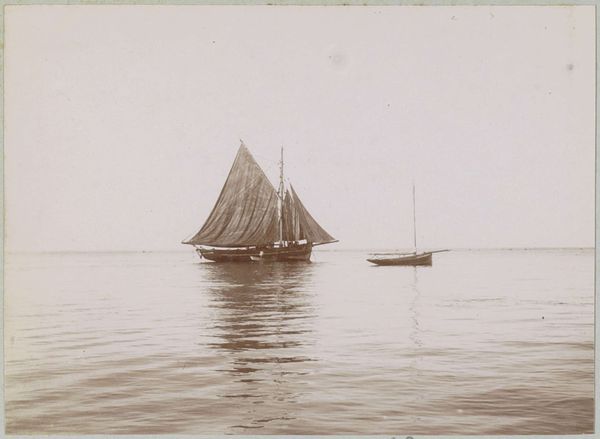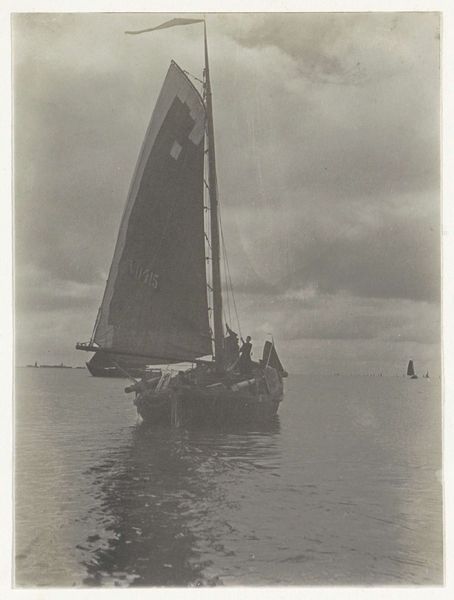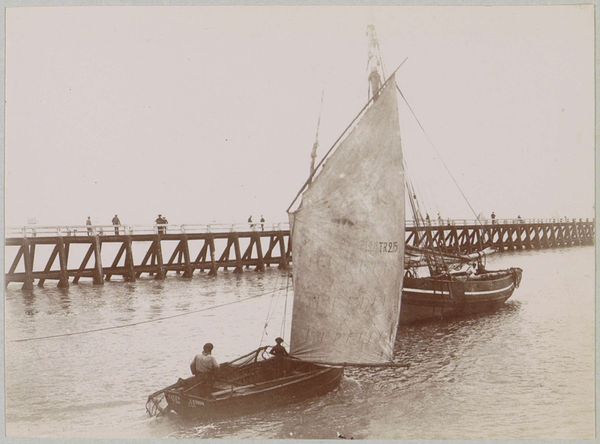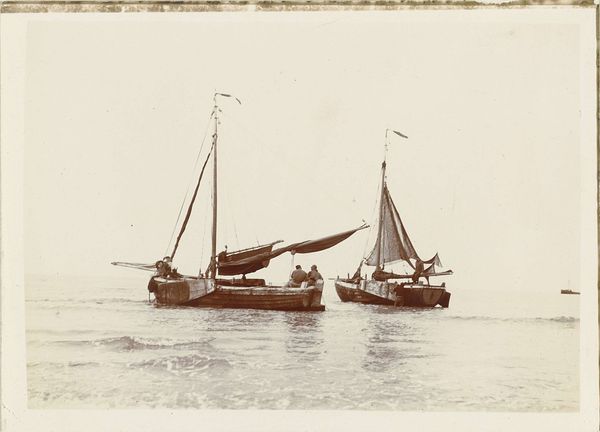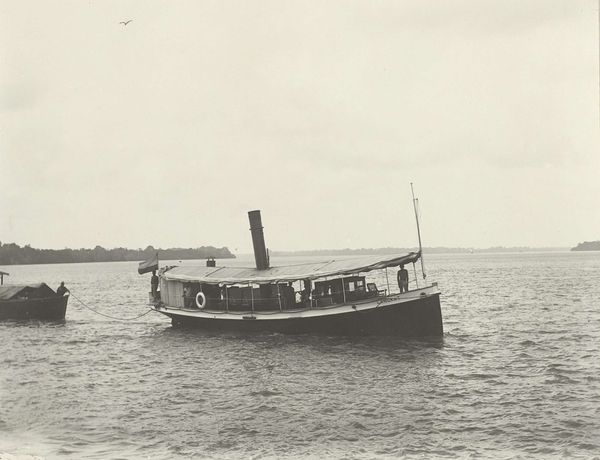
Dimensions: height 79 mm, width 109 mm
Copyright: Rijks Museum: Open Domain
Curator: What a serene scene. This is "Zeilschip op de Seine in La Bouille bij Rouen," a photographic print dating back to 1896. It resides in the Rijksmuseum collection. Editor: It has such a dreamy quality. Almost like a memory fading. What I find striking is how this one sailing boat dominates the frame and how its whiteness really catches the eye. Curator: That’s a fascinating observation. Looking at this from a materialist's point of view, consider the accessibility of photography at this time. A print like this, documenting everyday life on the Seine, would be reaching a burgeoning middle class, hungry for representations of leisure and commerce. We should remember photography's reliance on particular materials in capturing images such as this; also consider its impact on painters’ and printmakers’ modes of making art. Editor: Absolutely. And from a historical perspective, think about the cultural weight of the Seine itself. A working river, a source of life and trade, suddenly presented as this almost idyllic vista. The emerging photographic societies surely influenced the development of Impressionism and later Modernism, reshaping public taste, influencing collecting, and encouraging social discourses around nature. Curator: There’s an interesting tension between nature and industry here too, wouldn't you agree? Editor: Precisely. And also how easily reproducible these photographic images were. That touches on your point about their accessibility but also the democratization of the image-making process. These new ways of picturing everyday life were certainly influencing public perception and social engagement. Curator: I also like how photography at this time allowed for the production of art objects at relatively high volumes, making images like these easier to be consumed and disseminated in contrast to earlier, less pervasive, printing technologies. Editor: Agreed. It certainly pushes us to rethink conventional boundaries that may separate arts and crafts as well as other methods of production, circulation and dissemination. Curator: Indeed, and examining such prints provides insightful connections between aesthetics, labour, and socio-cultural transformation in the 19th century. Editor: It offers a snapshot, if you will, into a transformative period, captured in tones of history and industry, with lingering cultural significance.
Comments
No comments
Be the first to comment and join the conversation on the ultimate creative platform.
